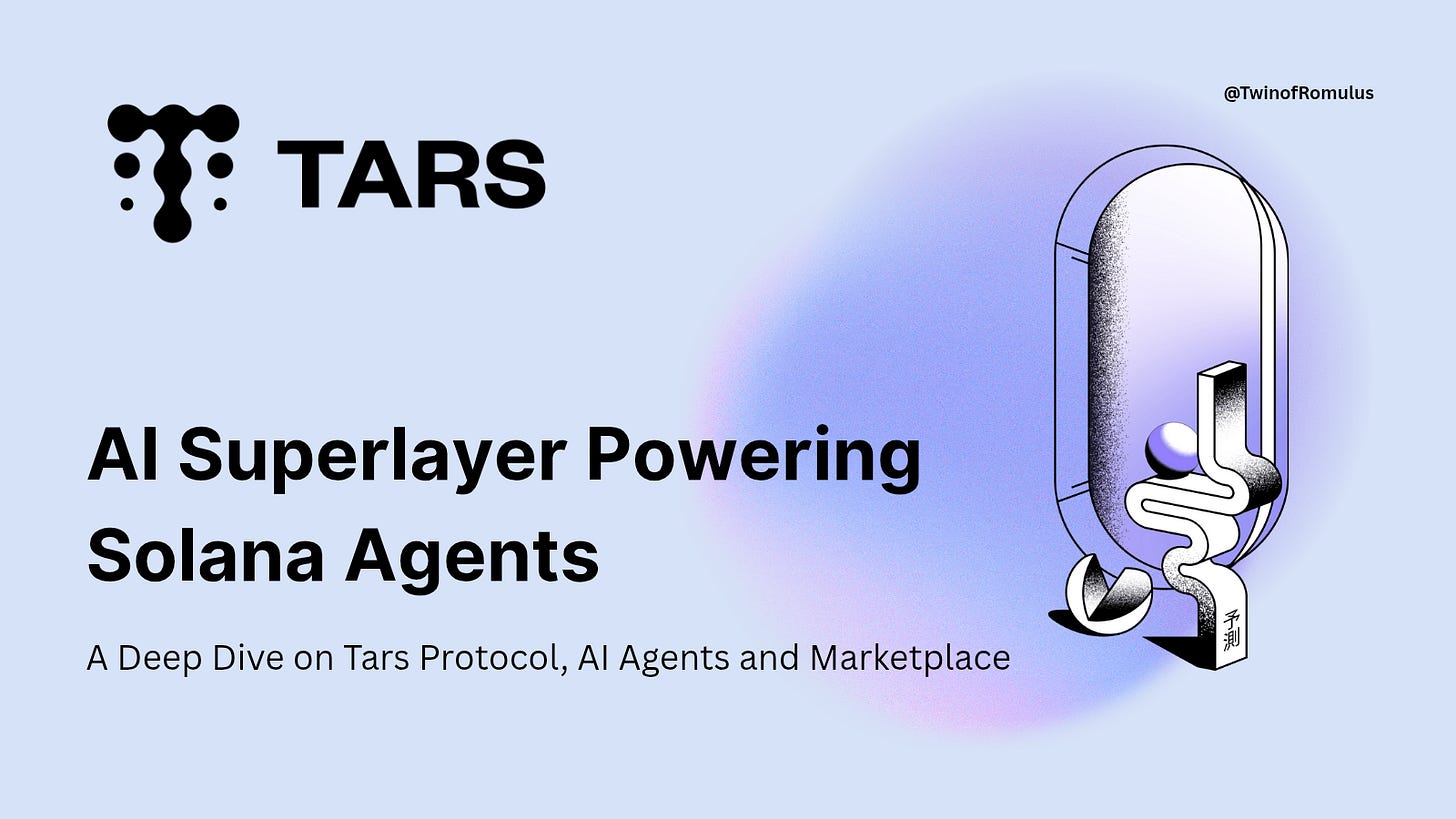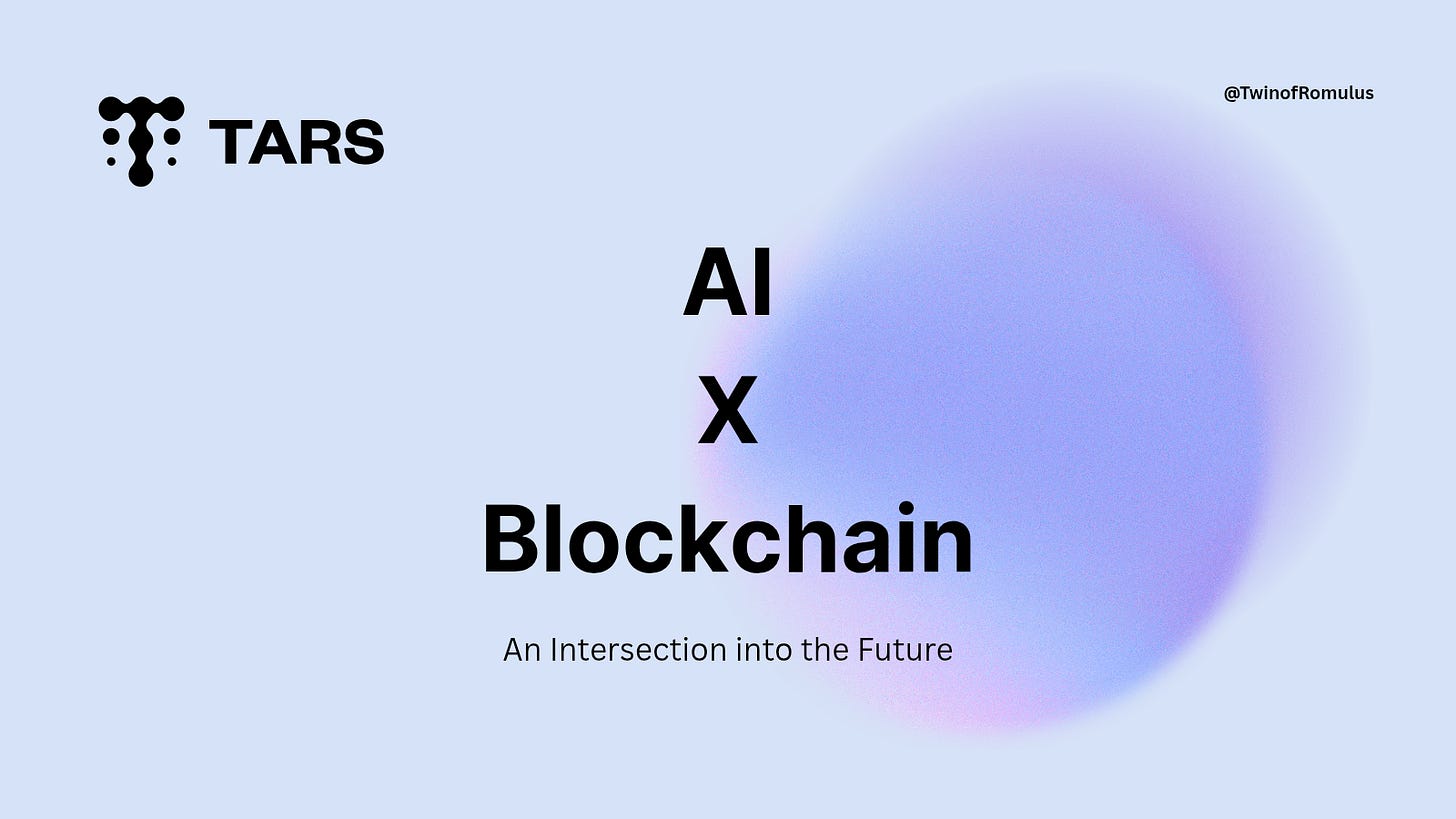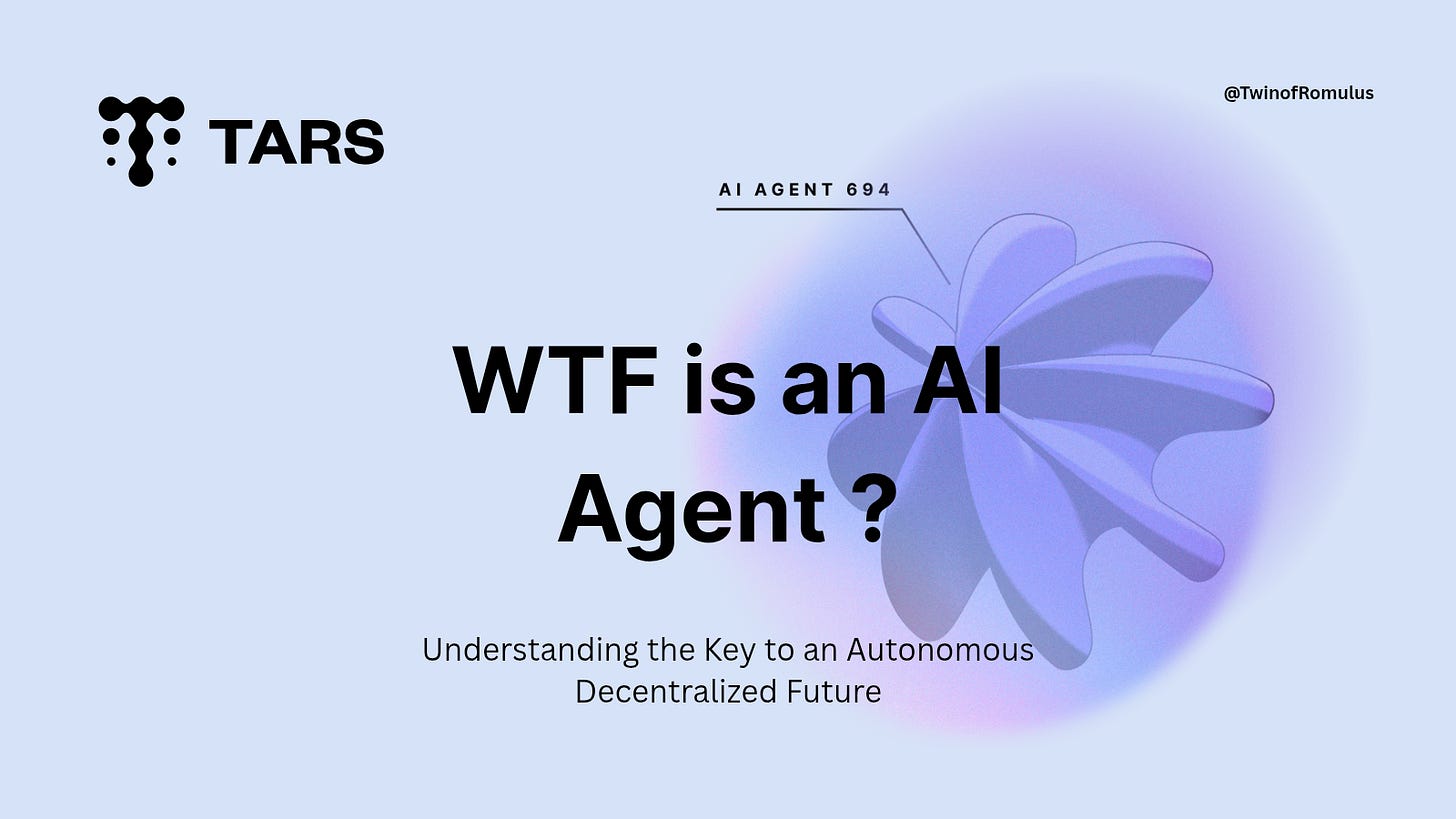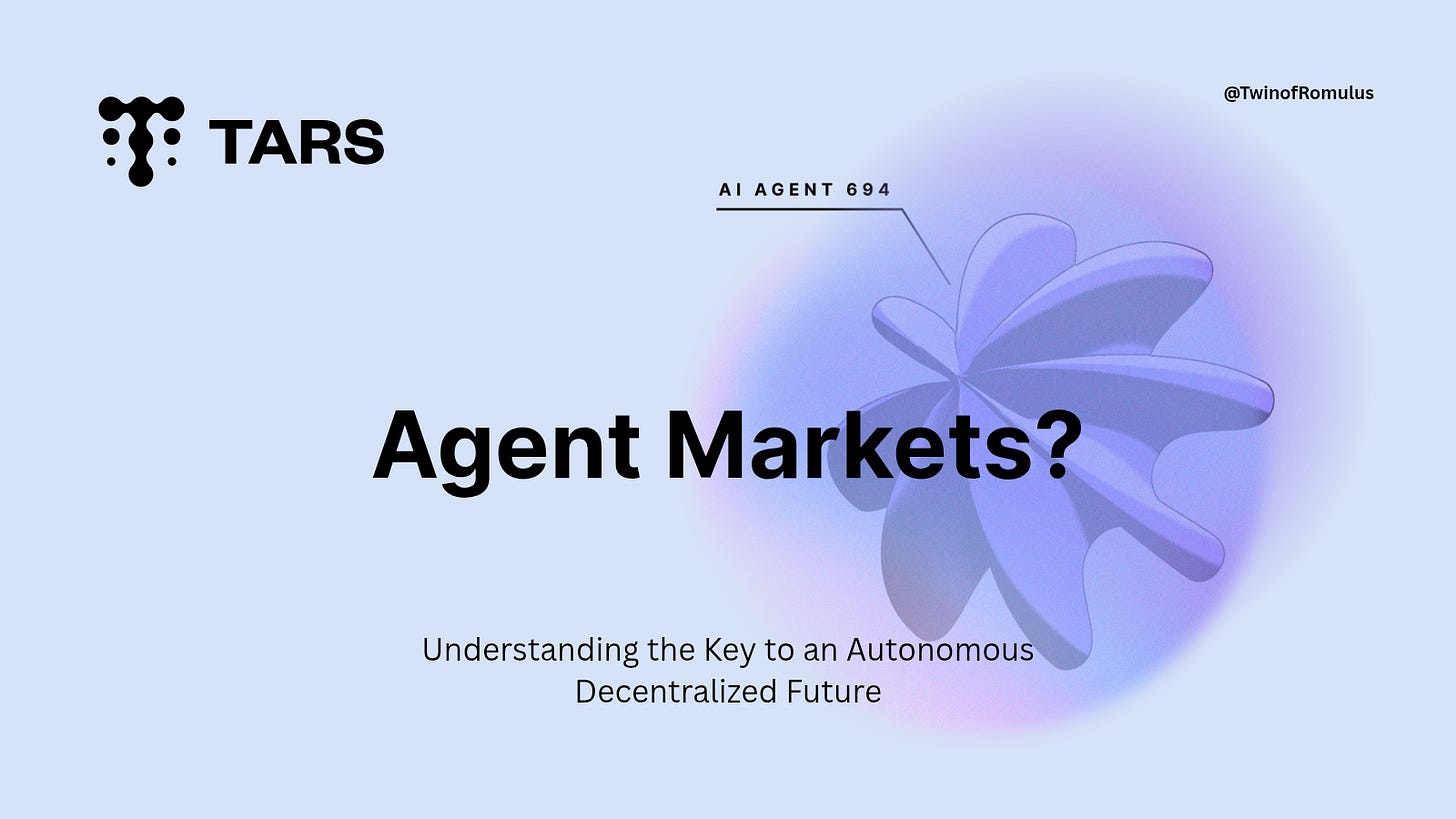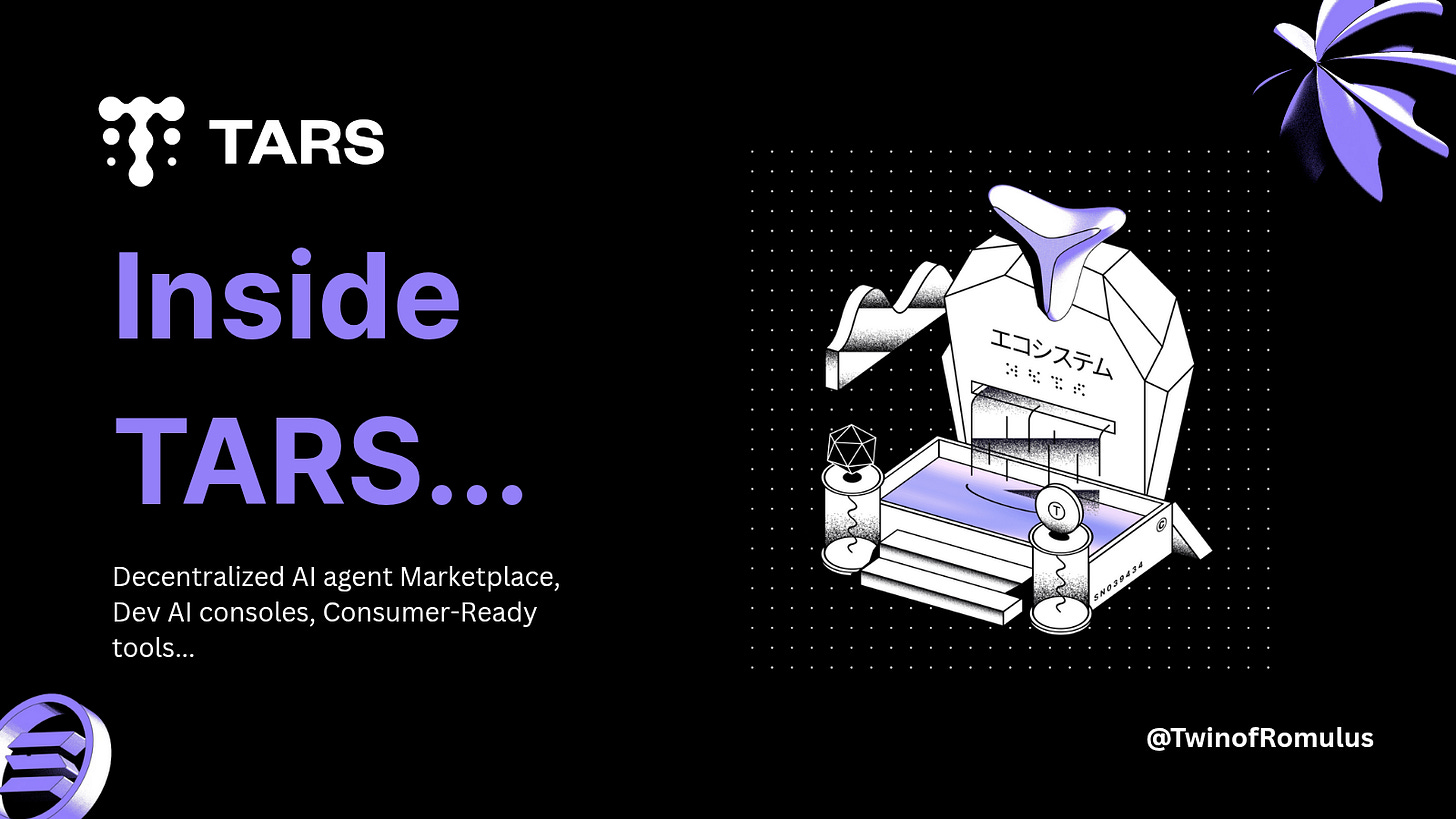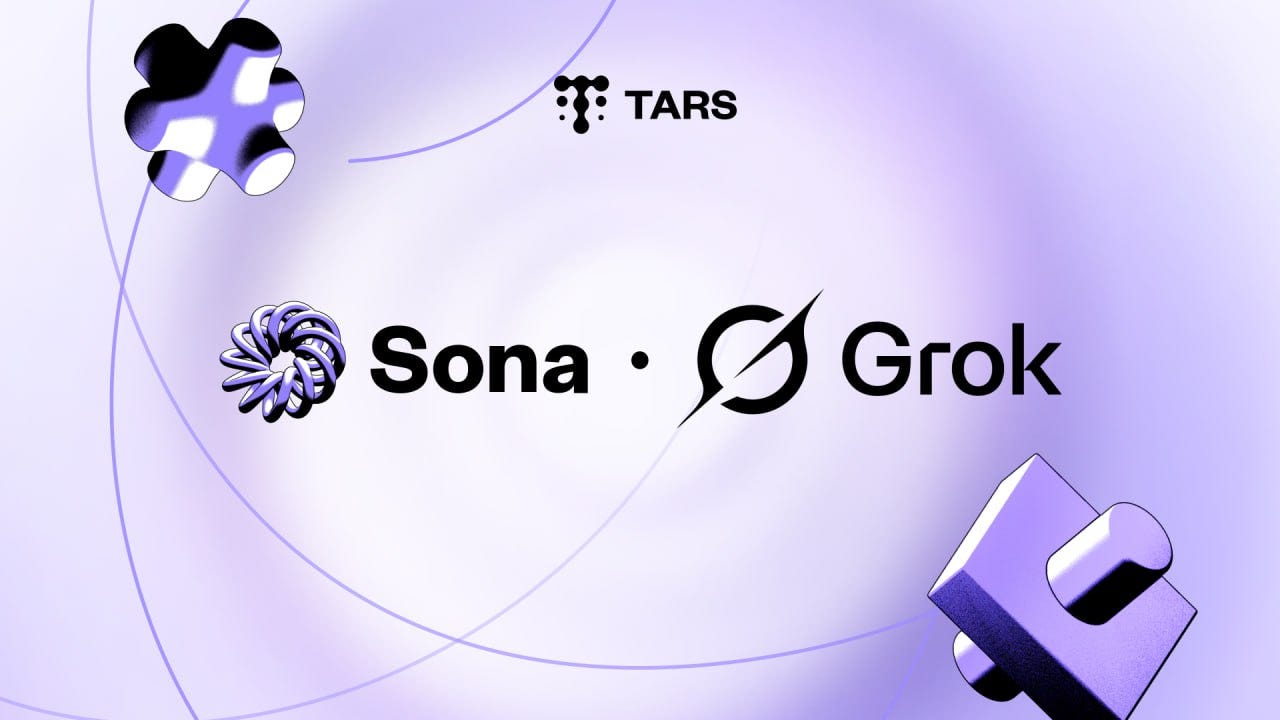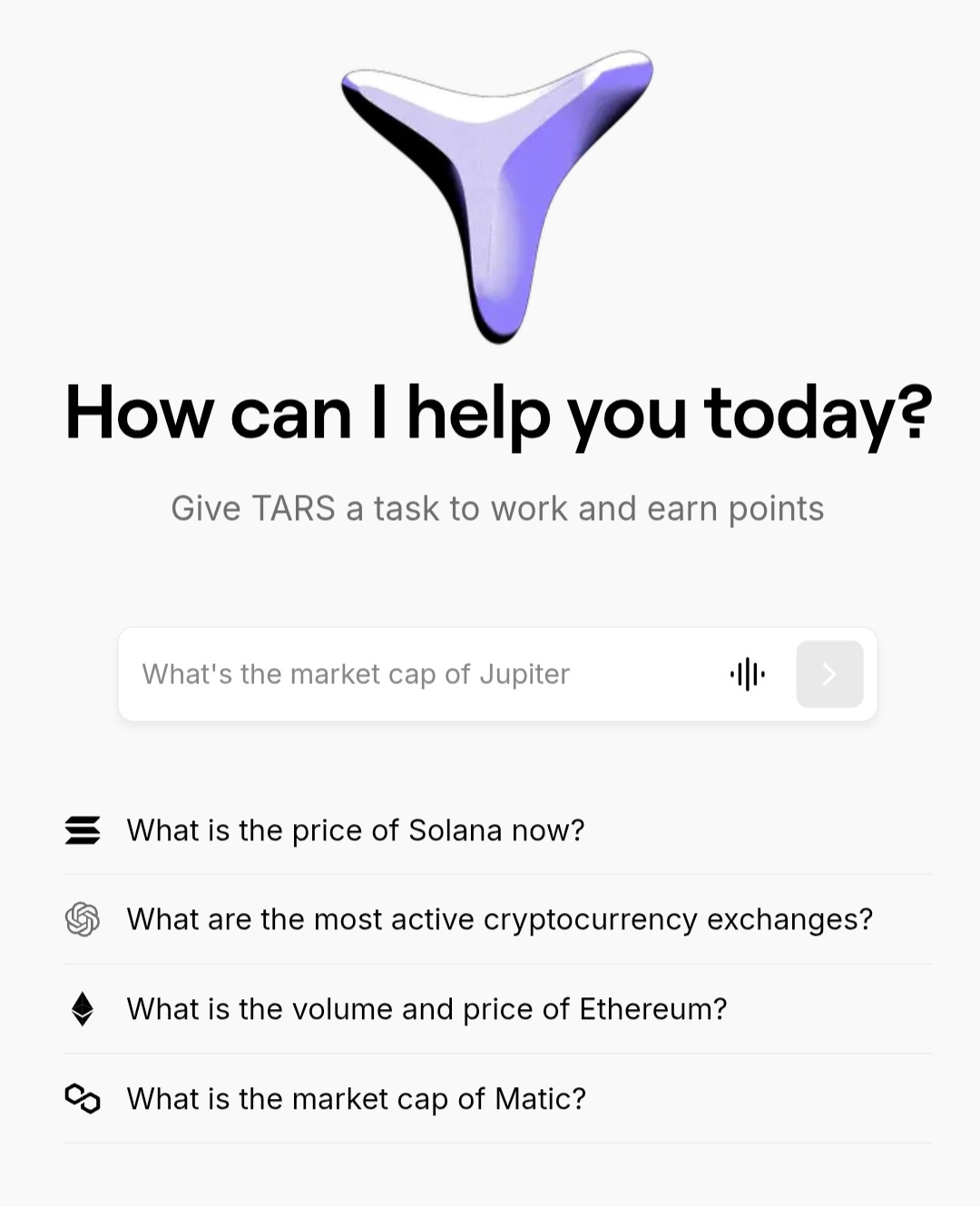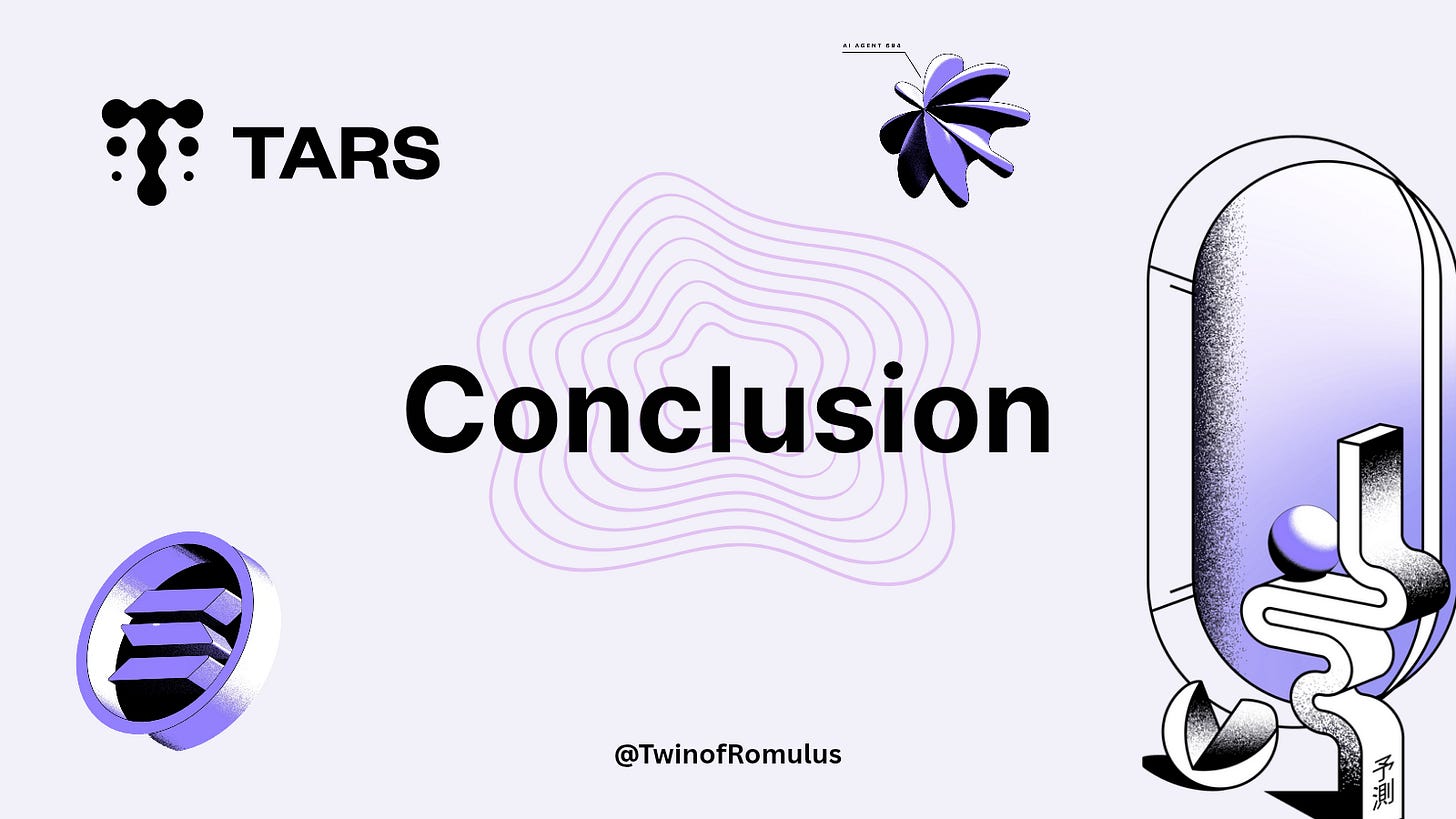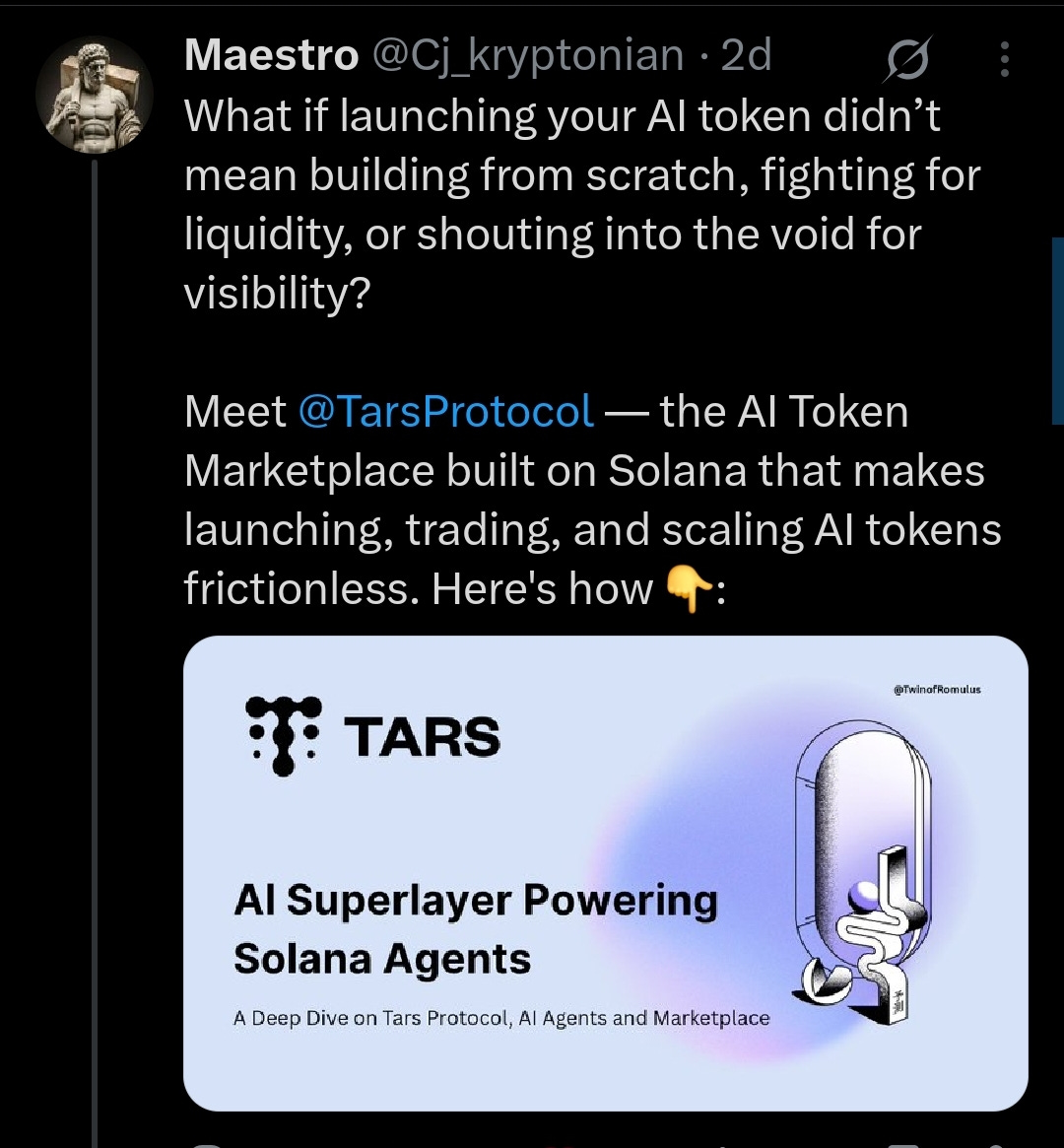Powering the AI Agent Economy: Tars in Focus
Unlocking the AI Marketplace, Token Economy & Dev Tools Shaping Decentralized Intelligence.
Introduction
Over the past couple of years, it’s felt like we’ve been watching two parallel tech revolutions unfold in real time. On one side, AI has gone from niche tools to household names — with ChatGPT leading the charge, Claude and Gemini pushing boundaries, and Sora casually generating video content like it’s no big deal.
On the other, Blockchain Technology has been evolving rapidly, with ecosystems like Solana proving that decentralized infrastructure can be fast, cheap, and actually usable at scale.
Now we’re seeing something exciting: these two worlds are beginning to intersect. The fusion of AI and blockchain isn’t just a buzzword anymore — it’s producing real innovation.
Think: AI agents that can manage wallets and transactions, smart contracts making AI decisions, and token economies rewarding people for training data.
It’s wild. And honestly? It makes a lot of sense. — the potential here is massive.
Because as AI agents grow more powerful, they're also becoming more autonomous. They can reason, plan, and even collaborate. But why should that power be locked behind centralized APIs or proprietary ecosystems?
This is where blockchain comes in. It offers a foundation where AI agents can operate out in the open — decentralized, verifiable, and permissionless. And with emerging marketplaces like TARS, we're starting to see the infrastructure that makes this possible: platforms where anyone can deploy AI agents, set their incentives, and plug into a larger network of composable intelligence.
Suddenly, AI doesn’t just serve us — it belongs to us. The next wave of innovation won’t just be smarter machines — it’ll be open, decentralized economies powered by AI that anyone can access, improve, and benefit from.
And that changes everything.
In this deep dive, I’ll explore what TARS is doing differently, why this intersection of AI and crypto matters, and how TARS ( with their recently launched marketplace ) might quietly be laying the groundwork for the next wave of on-chain intelligence.
The AI x Blockchain Convergence: Why Now?
AI and blockchain might seem like different worlds at first glance — one brings dynamic intelligence and learning, while the other supplies a bedrock of trust and decentralization. But when you look closely, their strengths beautifully complement each other. AI thrives on data-driven insights and adaptive decision-making, and blockchain secures these processes with transparency, immutability, and decentralized coordination.
We’re already witnessing early experiments: such as autonomous trading bots that not only make decisions but also log every move on-chain for auditability, or decentralized networks where AI models are trained collaboratively with shared data incentives. These real-world glimpses show us that challenges like computational intensity and data verifiability are surmountable.
This convergence isn’t just theoretical — it’s actively shaping new ecosystems.
But if all that sounded like gibberish, don't worry— let's rewind and get some context: what are AI agents, what are agent markets and why do we even need them?
What Are AI Agents?
Essentially, AI agents are autonomous software programs designed to perceive their environment, make decisions, and act toward a goal — all with minimal human input. Unlike traditional bots that follow simple instructions, AI agents can learn, adapt, and reason based on data or outcomes. Think of them as digital freelancers with brains: they can negotiate, recommend, execute tasks, and even talk to other agents.
Popular examples today?
Chatbots that do more than answer FAQs — they can book flights, resolve issues, or upsell based on your behavior.
Financial trading bots that continuously analyze markets and rebalance portfolios.
AI tools that manage your inbox, calendar, and workflows autonomously.
These are all early forms of agents. But things are moving fast, and they’re getting smarter, more capable, and more independent.
What Are AI Agent Markets?
Now imagine this: instead of building your own agent from scratch, you could shop for one like you do for an app. That’s the idea behind AI Agent Markets — platforms where developers can publish, monetize, and update AI agents, while users can discover and pay for the ones that best fit their needs.
Agent markets are kind of like ebay markets, but for autonomous, evolving digital workers.
And they’re not limited to just finding agents — these marketplaces can also:
Allow users to customize agents for specific roles.
Rate, review, and curate agents based on performance.
Facilitate token-based payments, incentives, and upgrades.
Blockchain Intersection: Why Tokenize AI Agents?
Tokenization is the process of converting rights or services into digital tokens that can be easily transferred and traded on a blockchain network. Simply put Tokenizing AI agents unlocks powerful benefits by turning them into tradable digital assets on the blockchain:
Driving Innovation: By providing token rewards, the platform encourages developers to continually refine and create advanced AI solutions. Much like the reward models used in cryptocurrency mining or staking, these incentives boost participation and spark continuous innovation.
Governance and Access Management: Tokens can act as a filtering tool, ensuring that only appropriately qualified or authorized participants take part in specific network functions. They also establish a decentralized governance structure, giving the community a role in shaping policies and guiding future direction.
Enhanced Liquidity and Value Creation: Tokenization transforms AI agents into liquid digital assets, which can be easily traded or used as collateral in decentralized marketplaces. This not only opens up new financial opportunities for developers and investors but also allows for continuous valuation and investment in the underlying technology.
Monetizing AI Capabilities: When AI agents become tokenized, they evolve from being simple tools into active economic participants. By performing services—from automated trading to personalized assistance—these agents earn tokens, which in turn support a self-sustaining loop that funds further development and scalability.
Interoperability within Decentralized Ecosystems: By representing AI agents as tokens, they can seamlessly integrate with a broader ecosystem of decentralized applications (dApps) and platforms. This interoperability enables automated, trustless interactions between various services and technologies, fostering a more connected and versatile digital economy.
Efficient Micro-Transactions: Tokens can facilitate fast, low-cost micro-transactions between agents and users. This capability is especially useful for scenarios where numerous small payments are required (e.g., pay-per-use services or data exchanges), making it economically viable to support complex, multi-agent systems without traditional payment infrastructure.
The emergence of tokenized ecosystems suggests a future where AI systems are self-sustaining and evolve based on real-world use and market dynamics.
Why Do We Even Need AI Agent Markets?
Great question. Here’s why they’re important:
Scalability: AI agents are becoming essential across industries — but building one takes time, money, and technical know-how. Agent markets lower the barrier for access and distribution.
Specialization: Just like you don’t want one app to do everything, you don’t want one agent doing your finances and writing your blog and running customer support. Markets allow specialization and plug-and-play functionality.
Incentivization: With tokenized marketplaces, developers can get paid for performance, usage, or quality — creating real economic incentives to build and maintain better agents.
Transparency & Trust: When combined with blockchain, you can track what agents do, how they make decisions, and how they evolve — crucial for high-stakes use cases like finance, healthcare, or governance.
With a solid understanding of AI agents under our belt, it's about time we dug into Tars and see what it brings to the table.
Inside TARS: The AI Superlayer on Solana
At the foundation of TARS lies a groundbreaking concept: a decentralized marketplace for AI agents. A hub where intelligent agents aren’t just accessible—they’re tokenized, ownable, and composable. Built on Solana’s high-speed infrastructure, this marketplace allows anyone to publish, explore, and monetize AI-powered tools in a fully on-chain environment.
Whether you're looking for a DeFi trading assistant, an automated customer support agent, or a gaming NPC with real-time decision-making—there's an agent for that. Each one operates like a mini dApp, complete with its own permissions, pricing model, and user feedback loop.
Users can sort agents by function, category, or cost, and developers can integrate token-based gating, microtransactions, or freemium models. It’s designed to be permissionless and transparent, making it easy for builders to plug their agents into wider applications or license them to other projects.
Developers build agents through the AI Console—a web-based IDE for designing, tokenizing, and managing AI logic. Once deployed, agents can be monetized via Solana-native tokens through call fees, subscriptions, or token gating. These agents are then listed on the marketplace and can be accessed by users or even other agents, enabling a mesh of composable, on-chain intelligence.
User interaction spans multiple touchpoints. Sona, the on-device AI assistant purpose-built for the Solana Saga phone, delivers hands-free, private access to on-chain activity—whether it’s checking wallet balances, managing NFTs, or setting DAO participation reminders. Unlike cloud-dependent assistants, Sona runs locally and speaks Web3 natively, enabling secure voice or chat-based interactions with dApps and smart contracts.
What’s more, Sona is model-agnostic—compatible with leading LLMs like DeepSeek AI and Grok—giving developers the flexibility to tailor its intelligence layer based on performance, cost, or specialization.
Combined with TARS’ developer SDKs, embedding AI into apps becomes as seamless as importing a library, empowering builders to craft deeply integrated, intelligent user experiences.
What sets TARS apart is its modular, open architecture. Agents act as composable building blocks—combine them into “super agents” to automate complex workflows, from DAO governance to community engagement. For example, an NFT project could pair a lore generator with a community mod agent to power real-time fan interactions.
Supporting this is TGPT, a blockchain-native LLM interface for querying smart insights from on-chain data,
and the AI Aggregator—a discovery engine that ranks agents based on usage, feedback, and performance. Together, they ensure that the best tools surface, top performers thrive, and the ecosystem self-organizes around real value.
TARS is reshaping AI by bringing agents on-chain—making them composable, transparent, and ownable. Developers retain rights to their models, users benefit from verifiable logic, and communities can govern the agents they rely on. It’s a tokenized, incentive-aligned layer where intelligence becomes a building block anyone can use, monetize, and contribute to—flipping the script on today’s closed, centralized AI landscape.
How TARS Fits In: A Marketplace for AI Tokens with Real Liquidity, Discovery, and Utility
TARS isn't just a toolset — it's the connective tissue for the AI x Web3 ecosystem, offering the rails for how AI agents are discovered, monetized, and utilized across Solana. Traditional AI products live in silos. You build a model, deploy it on a cloud server, maybe gate it behind Stripe or API keys, and pray for user traction. TARS flips that model. It treats each AI agent like a marketable asset, issuing tokens that can represent usage rights, access tiers, or even ownership in future revenue. These tokens live on Solana, which means they’re fast, cheap, and composable with the rest of the ecosystem — usable in DAOs, tradable on AMMs, or stored in wallets alongside NFTs and staked SOL. By doing this, TARS turns AI agents into on-chain primitives, allowing liquidity to flow around intelligence just like it does around yield-bearing DeFi instruments or meme coins.
One of the most compelling aspects is how discovery and curation work. Through the AI Marketplace, you can browse agents by category — analytics, creative, infrastructure, social, research — and view usage data, developer profiles, and performance benchmarks. It feels like a blend of an app store, a code repo, and a DEX, where you're evaluating not just what an agent does, but how it's being used, rated, and monetized. This visibility enables new devs to spot gaps, remix existing agents, or contribute to the ecosystem in ways that weren’t possible in traditional AI development.
Personally, one of my favorite features is the ability to compose agents together, almost like smart contracts calling each other. For example, you might pair a sentiment analysis agent with a Telegram responder to build an auto-moderating community manager for a DAO chat. Or string together a Web3 data parser, a portfolio summarizer, and a voice assistant for a mobile-native investor dashboard. This Lego-like modularity is core to the TARS vision — intelligence as something you remix, not just consume.
Use Cases & Future Outlook: Real-World Applications and What’s Next for AI Agent Markets
AI agents on TARS aren’t theoretical. They’re already showing up across Web3 in ways that are tangible and powerful. In DeFi, agents can analyze on-chain trends and offer portfolio insights through bots like TGPT or custom dashboards. In NFTs, lore-generation agents are helping creators spin entire universes around their collections — dynamically expanding storylines based on community input. DAOs are using governance advisors, proposal summarizers, and treasury bots to automate day-to-day functions. Solana-native startups are integrating AI agents to replace traditional SaaS — like customer support, knowledge base management, or contract auditing — but in a way that’s faster, cheaper, and programmable. This shift is subtle but radical: instead of paying monthly fees to SaaS platforms, projects are buying into tokenized AI logic, where the value circulates within the ecosystem.
Looking forward, the potential for AI Agent Markets is massive. Thousands of agents working together in autonomous swarms — collaborating, negotiating, or even contracting services from one another. A DAO might be entirely run by agents: one proposing strategies, another modeling risk, another executing on-chain actions based on governance signals. You could have agent networks forming around entire verticals: DeFi research clusters, legal advisory collectives, or education guides for onboarding new users. The TARS infrastructure enables these agents to interact, trade tokens, split rewards, and evolve in ways we’ve only seen in sci-fi.
As open-source LLMs continue to improve, and as more devs enter the space through hackathons and competitions, we’ll likely see a Cambrian explosion of specialized, tokenized agents — each solving niche problems, contributing value, and earning for their creators. The endgame? A decentralized intelligence layer for the internet, where AI is not just another product but a fluid, composable, programmable fabric that anyone can tap into.
Conclusion
TARS isn’t just building tools — it’s architecting a future where intelligence becomes a decentralized, liquid, and programmable asset. By creating a marketplace for AI agents and tokenizing their utility, TARS gives developers a way to monetize their creations, users a way to access powerful on-chain tools, and the broader Solana ecosystem a dynamic intelligence layer to build on. The modularity, liquidity, and composability of AI on TARS sets it apart from anything in Web2 or even Web3 today. As we move into a world increasingly shaped by both AI and blockchain, platforms like TARS aren’t optional — they’re foundational. They offer a vision where intelligence is open, incentivized, and permissionless. Whether you're a developer, a founder, a trader, or just someone curious about what’s next, TARS is laying the groundwork for a new internet — one where agents don’t just respond to us, they build with us.
If you enjoyed you can also check my twitter post on benefits of launching with Tars here»


